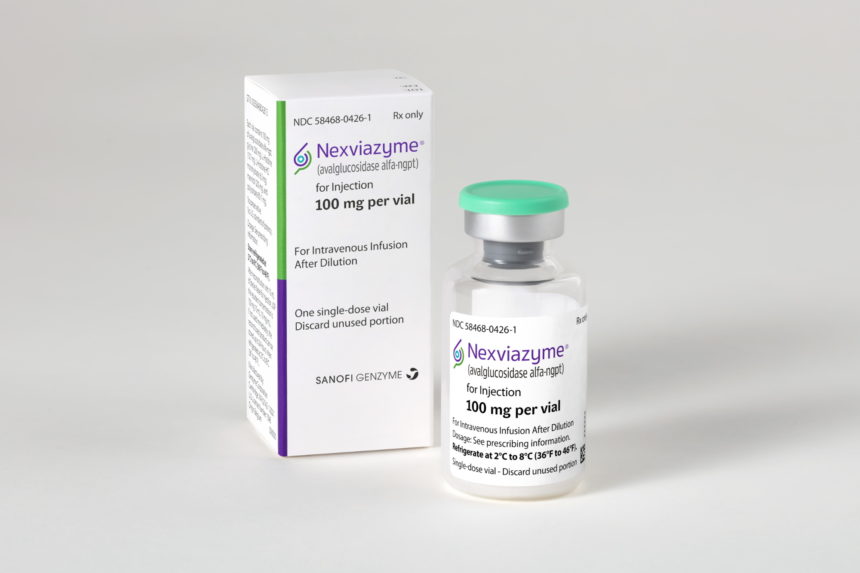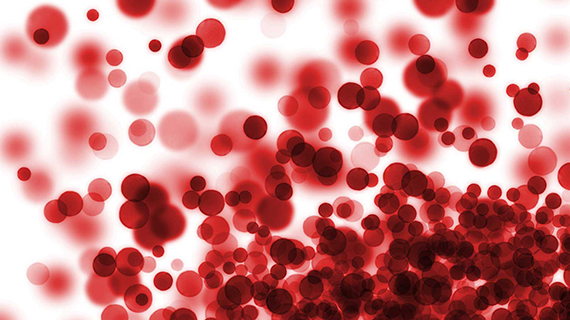Sanofi extends its Pompe range with first Nexviazyme OK

Sanofi has added another string to its Pompe disease therapy bow, after getting FDA approval for Nexviazyme, its latest therapy for the rare, inherited disorder.
The US regulator has approved Nexviazyme (avalglucosidase alfa) for the treatment of patients aged one year of age and older with late-onset Pompe disease, which progressively attacks the heart and skeletal muscles.
The drug is a recombinant version of the enzyme alpha-glucosidase, which is deficient in Pompe disease, leading to the accumulation of glycogen to toxic levels that damage muscle cells.
Sanofi's Genzyme rare diseases division already sells another enzyme replacement therapy for Pompe disease based on the recombinant enzyme alglucosidase alfa – sold as Myozyme in Europe and Lumizyme in the US – which brought in more than $1 billion in sales in 2020.
Myozyme was first to market in 2006 for infantile-onset Pompe, with Lumizyme reaching the market four years later to treat late-onset Pompe in children aged over eight. In 2010, Lumizyme's label was expanded to the under-eight group as well.
The enzyme in Nexviazyme has 15-fold more mannose-6- phosphate(M6P) residues per molecule than alglucosidase alfa, which according to Sanofi scientists increases enzyme uptake in targeted tissues, where it clears glycogen build-up in muscle cells.
Sanofi said it will launch Nexviazyme at the same price as Myozyme/Lumizyme, which remains the only other FDA-approved therapies for Pompe. The company estimates there are around 3,500 people in the US with both early- and late-onset forms of the disease.
The FDA approval is based on the results of the phase 3 COMET trial, which compared to Nexviazyme to alglucosidase alfa. According to an FDA statement on the approval, "treatment with Nexviazyme improved lung function similar to the improvement seen with the other therapy."
The investigators in the study said that the newer drug was however associated with a reduced rate of adverse events and fewer withdrawals than alglucosidase alfa, with less variability in treatment response between patients.
The new drug has also been recommended for approval in Europe as Nexviadyme, but the Committee for Medicinal Products for Human Use (CHMP) said in its positive opinion that the drug was not deemed to be a new active substance (NAS) – an important consideration for drugmakers as NAS products benefit from a full 10 years of protection against generic competition.
Products that do not qualify for NAS status are considered to fall under the existing period of exclusivity of the previously authorised product, and for alglucosidase alfa. Sanofi said it would be requesting a re-examination of the CHMP opinion in relation to the NAS conclusion.
Sanofi wants to position Nexviazyme as the new standard of treatment for late-onset Pompe disease, and has claimed approval ahead of its closest rival Amicus Therapeutics, which has filed a rolling marketing application for its AT-GAA (cipaglucosidase alfa/migalastat) candidate with the FDA.
Amicus' drug also failed to show a significant improvement of Lumizyme in its phase 3 trial, called PROPEL, but like Sanofi the company pointed a various secondary outcome measures that it says improve on the older drug.












